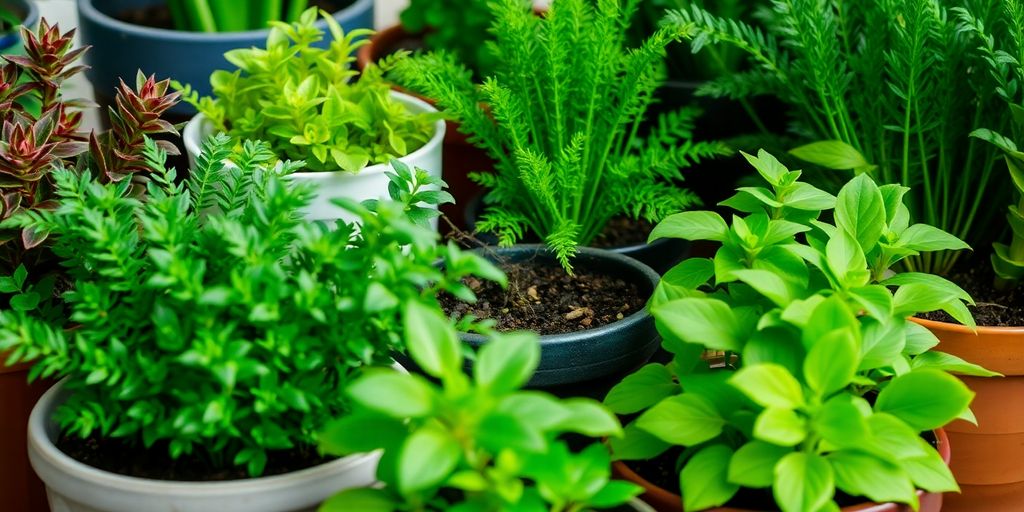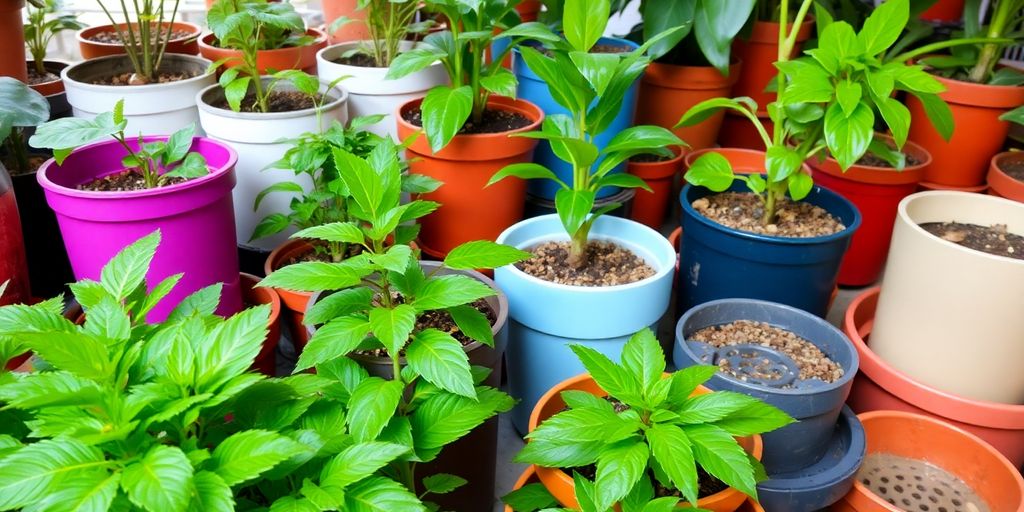How to choose the right pots for each type of plant is a crucial step in ensuring healthy growth and vibrant greenery. The right pot affects everything from drainage to root development. Picking the perfect container can make all the difference in your plant’s success.
Different plants have different needs when it comes to size, material, and shape of their pots. Some prefer breathable clay, while others thrive in sleek plastic or ceramic containers. Understanding these needs helps prevent common problems like root rot or stunted growth.
Choosing pots isn’t just about function—it’s also an opportunity to express your style and enhance your space. The right pot can complement your decor while supporting your plant’s health. Balancing aesthetics and practicality is key.
Ready to become a pot pro? This guide will help you navigate the options and choose containers that keep your plants thriving and looking great. Let’s dig into the essentials of smart pot selection.
Key takeaways
- Always match pot size to your plant’s growth stage for optimal health.
- Choose pot materials based on aesthetics and functionality, considering how they affect moisture and air circulation.
- Make sure your pots have drainage holes to prevent waterlogged soil, which can harm your plants.
Choosing the right pot for your plants

Factors to consider
Alright, so you’re diving into the world of plant pots, huh? It’s not as simple as grabbing the first cute thing you see at the store, trust me, I’ve been there! The size of the pot is super important. You gotta think about how big your plant is now, and how big it’s gonna get.
Material matters too. Clay pots are great ‘cause they let the soil breathe, but plastic ones hold moisture better. And don’t forget about drainage – more on that later, but it’s a deal-breaker. I learned that the hard way when I drowned my first succulent. Whoops!
Recommended pot sizes
Okay, let’s get down to brass tacks. Here’s a quick and dirty guide to pot sizes:
- Tiny plants (like, just starting out): 4-6 inch pots are your best bet.
- Medium-sized plants (doing their thing, growing nicely): Go for 8-12 inches.
- Big boys (or girls!): 14 inches or bigger. These guys need room to stretch their roots.
It’s not an exact science, but it’s a good starting point. You can always repot later if your plant starts looking cramped. I usually wait until I see roots poking out of the drainage holes – that’s a sure sign they need more space. Happy planting!
Understanding pot materials
Clay pots and their benefits
Okay, so let’s talk pots! Clay pots are super popular, and for good reason. Their biggest plus is that they “breathe” better than plastic. This means air can circulate around the roots, which is a big deal for keeping your plants happy.
I’ve noticed my herbs especially seem to dig clay pots. But, they can be a bit heavy, especially when filled with soil and a plant. Plus, they tend to dry out faster, so you gotta keep an eye on the watering. Here’s a quick rundown:
- Pros:
- Good airflow for roots
- Natural look
- Helps prevent overwatering (in some cases)
- Cons:
- Can dry out quickly
- Heavier than plastic
- Can be more expensive
Plastic pots and their drawbacks
Now, plastic pots. They’re everywhere, right? They’re cheap, lightweight, and come in a zillion colors. I’ve definitely used my fair share. But, they do have some downsides.
They don’t breathe like clay, which can lead to waterlogged soil and root rot if you’re not careful. I’ve learned that lesson the hard way, believe me. Also, they can get kinda brittle and crack over time, especially if they’re out in the sun. Here’s the lowdown:
- Pros:
- Inexpensive
- Lightweight
- Lots of color and style options
- Cons:
- Poor airflow
- Can lead to overwatering
- Can degrade in sunlight
Importance of drainage in pot selection

Ensuring proper drainage
Okay, so drainage is super important. I learned this the hard way after losing a few plants to root rot. The key is to make sure excess water can escape, preventing your plant’s roots from drowning. Think of it like this: you wouldn’t want to sit in a puddle all day, and neither do your plants!
Here’s what I usually do:
- First, I always pick pots that already have drainage holes. Seems obvious, but you’d be surprised! If the pot doesn’t have any, you can sometimes drill some, but be careful not to crack the pot.
- Then, I add a layer of gravel or perlite at the bottom of the pot. This helps keep the soil from clogging the drainage holes and gives the water somewhere to go. It’s like a little reservoir for the excess water.
- Finally, I use a well-draining potting mix. Regular garden soil can get too compacted and doesn’t drain well, so it’s worth investing in a good potting mix. I usually get mine from the local hardware store, nothing fancy.
Signs of poor drainage
So, how do you know if your pot has poor drainage? Well, there are a few telltale signs. One of the first things I notice is yellowing leaves, which can signal that the plant is getting too much water. It’s like the plant is telling you, “Help, I’m drowning!”
Here are some other things to watch out for:
- Wilting, even when the soil is wet. This seems counterintuitive, but it means the roots are rotting and can’t take up water.
- Stunted growth. If your plant isn’t growing, even though you’re watering and fertilizing it, poor drainage could be the culprit.
- A funky smell coming from the soil. This is a sign of root rot, and it’s not a good sign, y’all. It’s kinda like that smell when you leave wet clothes in the washing machine for too long, but worse.
If you see any of these signs, it’s time to take action! You might need to repot your plant in a pot with better drainage or adjust your watering habits. Trust me, your plants will thank you for it!
Final thoughts on choosing the right pots
In the end, picking the right pots for your plants is key to their health and happiness. Remember, size matters—too big or too small can cause problems. Think about the material too; clay and plastic each have their pros and cons.
And don’t forget about drainage! It’s super important to keep roots from sitting in water. By keeping these tips in mind, you’ll set your plants up for success. So, whether you’re a seasoned gardener or just starting out, take a moment to choose wisely. Your plants will thank you!
Frequently asked questions
What size pot should I use for young plants?
For young plants, it’s best to use pots that are 4 to 6 inches wide. This size gives them enough space to grow without being too big.
Are clay pots better than plastic pots?
Clay pots are great because they let air through, which helps roots breathe. But they can hold too much water sometimes. Plastic pots are lighter and come in many colors, but they don’t breathe as well.
How do I know if my pot has good drainage?
To check if your pot drains well, look for holes at the bottom. If water collects at the bottom after watering, then it might not be draining properly.
